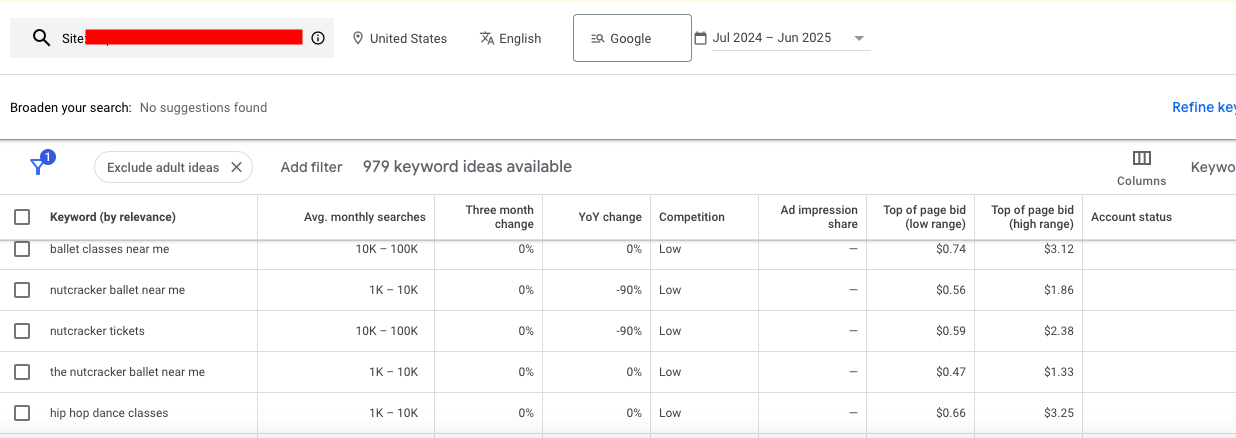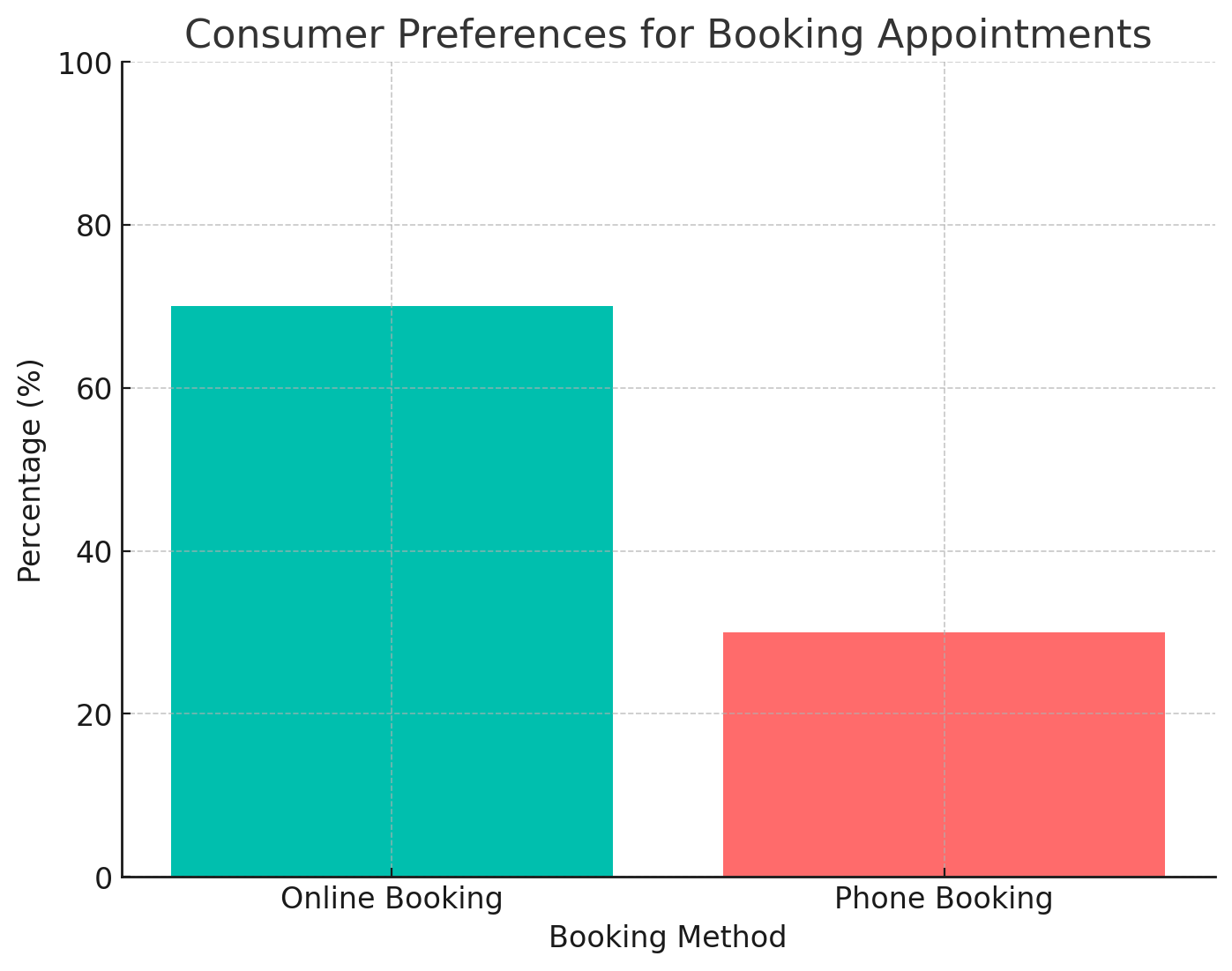
How to Make Your Classes Sell Out with the Right Program–Market Fit

Why do some classes fill up instantly while others struggle to get sign-ups? It often comes down to Program–Market Fit – aligning what you offer with what people really want!
Last time, we talked about Local SEO (getting your business discovered online) and how essential it is for community-based programs. Local SEO helps families find you in searches, but filling your classes goes a step further.
The next big step is Program–Market Fit. This is actually easy, yet missed most of the time. Program-market fit makes sure your classes and programs match what your customers are actively searching for and need.
In this article, we’ll show you how to identify what your customers want, optimize your programs accordingly, and ultimately fill your classes faster.
What is Program–Market Fit (and Why It Matters for Activity Businesses)
Program–Market Fit means creating classes or programs that perfectly align with your target audience’s needs and searches – much like “product–market fit” in the startup world, but for services.
In other words, your offerings should directly satisfy what local customers are looking for. When you achieve this alignment, the market embraces your program because it’s exactly what they wanted. A Harvard Business School study confirms that the payoff here is huge: programs that fit the market lead to satisfied customers, higher enrollment, and better retention (people keep coming back).
In essence, you want to meet customers at the exact moment they’re searching for what you offer. When someone types “dance classes near me” or “hip hop lessons for kids,” and your studio has a class by that exact name, you’re far more likely to get that sign-up.
How to achieve the right Product-Market fit?
Achieving a program-market fit involves some research and smart planning. Here are the key steps:
- Know exactly what people are searching for
- Learn where your clients hang out
- Survey your current and (lost) clients
Let’s dig a little deeper for a better understanding-
1. Know Exactly What People Are Searching For –
Instead of assuming what programs people in your locality are searching for, it is better to be more objective on this and use keyword research tools to discover the popular search terms in your niche.
The best part is that many of these tools are free and easy to use.
For example, Google Keyword Planner lets you input phrases like “kids dance classes” or “swim lessons near me” and see how many people search for them each month. This helps you gauge demand for certain class types.
As shown in the image below, you need to enter your business URL, input a target keyword of your choice/niche, and see how you get the volume of the related keywords. You can also compare from an entire list of curated keyword ideas along with YOY change, competition for each keyword, low and high range CPC of keywords as per location, and search Network Settings.

Another article shares how businesses can easily spot seasonal spikes using Google Trends. Especially for businesses with seasonal offerings like swim schools, ice-skating facilities, summer camps, and so on, you might find that searches for “swim lessons” peak in spring and early summer, or that “kids art camp” surges before the holidays.
Aligning your schedule with these trends (e.g,. offering swimming bootcamps in May or SAT prep classes each fall) ensures you have the right class at the right time to catch that wave of interest.
2. Learn Where Your Clients Hang Out (Online)

Go where your target customers discuss activities. This could be local Facebook parent groups, community forums (like Nextdoor or Reddit), or Instagram hashtags relevant to your business. Listen to what people are asking for.
Often, parents will directly post “Does anyone know of a toddler music class on weekends?” or teens might tag posts with “#basketballtraining” on Facebook groups. By monitoring these conversations, you gain qualitative insight into unmet needs. In fact, simply searching within Facebook groups for keywords (like “kids pottery class recommendation” in a local art program group) can reveal frequent requests or pain points.
Social media “listening” is a free way to validate what programs could be popular in your community.
3. Survey Your Current (and Lost) Clients
Your existing customers are a goldmine of information. Don’t be afraid to ask them what they want next. Send out a quick survey or include a suggestion question after class: “What class or workshop would you like to see us offer in the future?”
Also consider touching base with customers who didn’t stick around or prospects who trialed but didn’t buy – ask what offerings would have interested them. These surveys can directly uncover new class ideas.

According to a recent study by Business.com that focuses on the importance of survey data in marketing, businesses report that surveys often identify new courses or services that customers are already eager to buy.
4. Keep your data and insights handy
Similarly, your current customers and potential leads hold the key to powerful growth. Rather than guessing, you can easily tap into real-time data and get direct feedback from the people who matter most. Rely on a business management software that not just helps you with scheduling, selling, and payment, but also helps you to adequately track your clients' behavior and business performance seamlessly. This is an invaluable resource to understand exactly what your customers want.
By keeping your data and insights handy, you can confidently align your business strategy with the real needs of your audience, optimizing your offerings to boost both customer satisfaction and retention.
Now that we know what to track and how to analyze the data, let’s dive into the implementation phase. It's time to focus on structuring programs and creating classes that truly resonate with your audience—and most importantly, sell. Let’s break down how to design offerings that both meet your clients' needs and drive enrollments.
How to Create Classes and Programs That Sell?
Taking a step forward, here are some simple strategies to tweak your services for better program–market fit. These tactics can help your classes sell out faster:
a) Bundle Classes & Packages
One quick win is to bundle your classes or offer multi-session packs. For example, instead of drop-in soccer sessions, create a “5-Session Soccer Skills Pack,” or pair related services like “Intro to Kids Yoga 4-Week Course + 1 Healthy Cooking session” as a package. Bundling increases the perceived value for customers – they feel they’re getting more for their money, which is very compelling.

It also encourages commitment. According to a study, economists call this a ‘sunk-cost effect’ where customers who prepay for a program or classpack are more motivated to attend every session (nobody likes to leave sessions unused.
From a business perspective, classpacks boost loyalty and retention: if someone has 5 classes prepaid, they’re likely to stay with you until they use them, and often will purchase another pack. In fact, businesses find that offering class packs or bundles leads to higher customer retention rates compared to single-session bookings.
It’s a win-win: clients get a deal and flexible attendance, while you secure upfront revenue and a fuller calendar.
b) Create Seasonal or Trending Programs
Tap into immediate demand by offering programs tied to seasons or popular trends. Since interest in activities naturally rises and falls throughout the year, align your programs accordingly.

For example, you might run “Summer Swim Bootcamps” in June, a “Holiday Kids’ Craft Camp” in December, or an “Exam-Season Stress Relief Yoga” series each spring. These limited-time programs play on what’s top-of-mind for customers. They work so well because they leverage urgency and relevancy – people search for specific solutions at specific times. (Think of how searches for “workout plan for summer” spike in spring, or “indoor winter activities for kids” spike in cold months.
By offering a program that clearly fits the season or trend, you become the answer people are actively looking for right now. Trending programs can also be themed around cultural fads (e.g. a dance workshop inspired by the latest TikTok craze) or local events. The key is to be timely: a seasonal or trend-based class creates a surge of interest that can fill classes quickly because it feels “now” and necessary.
c) Flexible Scheduling & Online Booking
A frequent reason people don’t sign up for a class isn’t lack of interest – it’s scheduling conflicts or friction in the booking process. Capture those would-be customers by offering flexible scheduling and easy online booking.
First, consider adding multiple class times or days for your popular programs (morning and evening options, or a weekend class for working parents). If all your classes are at 3 PM on weekdays, you’re inevitably missing the segment of folks who can only do weekends or evenings.
The more options you provide, the more likely someone can find a slot that fits their life. Second, make signing up utterly painless. Ensure your website has a clear “Book Now” button, and use an online booking system like Omnify that lets people reserve and pay in a few clicks.
Here’s some recent data from various studies Marketbox Study-
- Consumer Preferences for Booking Appointments: This chart shows that 70% of consumers prefer online booking, with only 30% still opting for phone bookings.

- Impact of 24/7 Online Booking on Business Bookings: This study highlights that businesses offering 24/7 online booking experience a 37% increase in bookings compared to those with manual scheduling.
- Bookings after business hours- Another study suggests that 40% of bookings and appointments are done beyond business hours.
And there are even more and more studies that reveal the same. Hence, don’t lose sign-ups due to inconvenience. Offer flexible class times and let people book whenever they want, and you’ll remove two big barriers that often keep classes from filling up.
d) Upsell with Add-Ons
Another way to maximize each sign-up (and enhance the customer experience) is to offer add-ons during registration. Think about related extras a client might value.
For instance, a martial arts school could upsell a private one-on-one coaching session or a branded uniform when someone enrolls in group classes.

A music school could offer a bundle of digital practice session recordings or sheet music for a small fee. These add-ons not only increase your revenue per customer but also deepen the customer’s engagement with your business.
According to statistics shown in this article, upselling effectively has been shown to significantly lift profitability. Upselling can boost revenue by 10–30% on average. Secondly, companies with solid upsell strategies have seen customer retention rates increase by as much as 75%.
The key is to offer add-ons that genuinely complement the core class: things that make the experience more convenient or effective. If the add-ons feel useful rather than pushy, customers will appreciate them and your business benefits from the extra income and stickiness.
e) Free Trial or Intro Class

When in doubt, let people try before they buy. Offering a free trial class or a low-cost intro session can be a game-changer for winning over hesitant customers.
Many folks are interested in, say, kickboxing or coding class for their child, but they’re on the fence about committing. A free trial lowers that barrier completely – there’s no risk to checking it out. The conversion magic happens after the class: once someone has a positive experience, they’re much more likely to sign up for the full program.
The combination of a no-obligation taste and a timely follow-up is often enough to turn a curious attendee into a loyal customer.
f) Showcase Human Connection

In a digital age, people crave authenticity and connection – especially when choosing local classes for themselves or their kids. One simple but effective tip: use real photos and videos of your instructors, staff, and actual students in your marketing.
On your website and social media, replace generic stock photos of “kids playing on a trampoline” with a photo of Coach Jane high-fiving little soccer players, or a short video clip of your swim instructor greeting a child by name. These human touches build trust and relatability. Prospective customers can envision themselves (or their child) in your class more easily when they see smiling real participants, not just polished marketing graphics.
According to an experiment by a website, after they added human faces and real-life images, it dramatically improved conversion rate from 8.8% to 17.2%. By simply humanizing the experience, they basically not only gained conversion but gained trust as well.
Taking a notch up, this human and emotional connection should be present once your clients visit your business too. By showcasing the friendly faces and community in your classes, you not only appear more trustworthy but parents too feel safer seeing who will teach their child, and you also tap into the emotional factor that can tip someone from considering to registering.
Conclusion
Finally, remember that finding the perfect program–market fit is an ongoing process. Use data and feedback continually to refine your offerings. Dive into your enrollment reports (your booking software’s analytics can be very handy here to spot patterns.
Similarly, pay attention to search trends and customer inquiries over time – maybe this year you’re suddenly getting tons of questions about mindfulness or coding for kids. That could signal a new program opportunity. The idea is to iterate: adjust your program lineup, timings, and marketing based on what the real-world data is telling you.
By combining these tools with the program–market fit strategies above, you’ll be well on your way to creating “sold out” signs for your most popular classes. Don’t wait for classes to eventually catch on – proactively align them with real demand and watch the difference.
Book a free demo to see how Omnify can help you implement these ideas and you can start filling your classes faster by delivering exactly what your customers are looking for, when they’re looking for it.
Here’s to your future waitlists!
Learn how to fill your classes faster by achieving Program–Market Fit. Discover what your customers are searching for, optimize your programs, and sell more!









